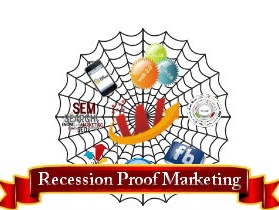
LinkedIn Cracks Down on Engagement Pods: A Positive Move for User Experience
Recently, LinkedIn has stepped up its efforts to tackle artificial engagement tactics on the platform, including the notorious engagement pods that have plagued user interactions. These pods allow groups of users to artificially inflate post engagement through coordinated likes and comments, which ultimately harms genuine conversations and relevant content visibility. In a recent update from Gyanda Sachdeva, LinkedIn’s VP of Product Management, the company revealed comprehensive strategies aimed at making these engagement pods ineffective.
Why Engagement Pods are a Problem
Engagement pods undermine the integrity of the platform by flooding feeds with less relevant content. According to LinkedIn, many users have reported that their insightful posts receive less engagement due to the overwhelming amount of artificially boosted content. Thousands of updates, driven by engagement pods, clutter LinkedIn’s informational landscape, which is meant to foster professional discourse and meaningful connections.
To combat this, LinkedIn aims not only to detect but also to limit the reach of such artificially boosted content. This is crucial as it helps restore trust among users who rely on the platform for authentic networking and learning opportunities. Sachdeva highlighted, "Our goal is to make engagement pods entirely ineffective," illustrating a firm commitment to enhancing user experience.
The Legal Front: Protecting Authenticity on LinkedIn
Interestingly, LinkedIn is considering legal actions against services that promote engagement pods or provide tools that facilitate artificial engagement. This firm stand underscores the platform’s larger mission to maintain an ecosystem where professionals can interact freely without the noise created by manipulative tactics.
Engagement pods often operate through third-party applications and desktop plugins, making them difficult to police effectively. However, with advancements in detection technology and a steadfast policy approach, LinkedIn appears resolute in its efforts to clean house.
Consequences of Artificial Engagement Tactics
The use of engagement pods not only lowers the quality of interactions but also exposes users to potential risks like shadow banning. LinkedIn employs sophisticated algorithms that can identify artificial behavior, which means that users participating in these pods might find their content earning less organic visibility. A recent report stated that many users engaged with less relevant content, diminishing their chances of reaching their intended audience.
Strategies for Authentic Engagement
While some may find the allure of instant likes hard to resist, cultivating genuine connections on LinkedIn is far more advantageous in the long run. Here are some strategies users can implement:
- Focus on Quality Content: Share posts that provide real value, insights, and industry knowledge.
- Engagement Through Interaction: Actively participate in discussions by liking and commenting on others' posts. Genuine interactions often invite reciprocal engagement.
- Utilize Hashtags: Use relevant hashtags to increase your content’s visibility to users beyond your immediate network.
Looking Ahead: A Commitment to Improvement
As LinkedIn dedicates resources to combat these engagement tactics, users can expect a noticeable improvement in their feeds, leading to higher quality interactions and more relevant content discovery. The changes not only highlight LinkedIn's commitment to preserving its platform’s integrity but also reflect a broader movement within social media to combat the prevalence of fake engagement metrics.
Take Action: Stay Informed
By understanding these developments and the implications of engagement pods, you can strategically adjust your approach on LinkedIn. Keeping informed about LinkedIn’s policies and actively participating in authentic networking will benefit your professional journey significantly.
 Add Row
Add Row  Add
Add 




Write A Comment